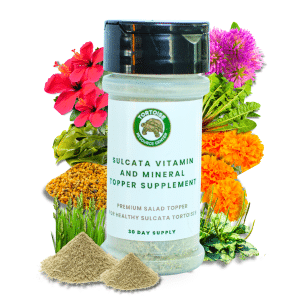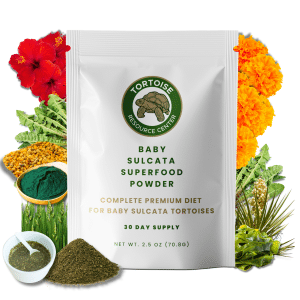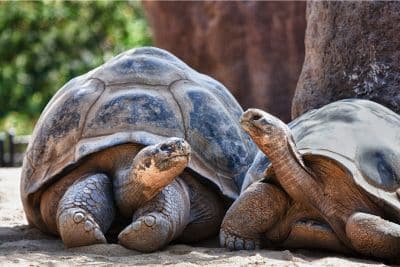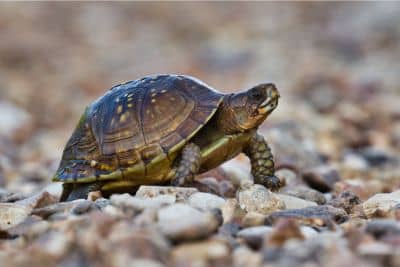One of the smallest in the world, the speckled padloper tortoise (Chersobius signatus) often catches the eye of tortoise enthusiasts with space limitations. However, there is a lot more to this species than just its small size, and prospective keepers are wise to learn as much as possible about these tortoises before purchasing one as a pet.
Unfortunately, there isn’t a great deal of information available regarding these rare tortoises – especially as it relates to their captive care.
Nevertheless, I’ll try to help by outlining some of the key facts and stats that are available about speckled padlopers below.
Range and Habitat
Speckled padlopers inhabit a relatively small portion of South Africa, known as the Little Namaqualand. This unique arid habitat is famous for its flora, and the region is home to more than 3,000 plant species – including a diverse array of succulents – that are found nowhere else on earth. Within this range, speckled padlopers are most commonly found living in rocky outcrops.
Despite being dry for much of the year, this region does experience temperature fluctuations. The summers are typically quite warm (bordering on hot), while the winters are relatively cool.
Physical Traits
Despite their diminutive size, speckled padlopers resemble typically sized tortoises in most respects. Nevertheless, they do have a few features and characteristics that distinguish them from other species.
Size
As mentioned at the outset, speckled padlopers stay very small by tortoise standards. Males often measure only 2.5 to 3.5 inches in length, while the females are a bit larger and sometimes approach 4 inches in length. As you may expect from such small tortoises, they weigh very little, with the largest individuals rarely exceeding 6 ounces.
Hatchling speckled padlopers are positively tiny. They average about 1.25 inches in length and weigh about 7 to 10 grams.
Markings and Morphology
Speckled padlopers have flatter shells than many other species. Though the reasons for this adaptation aren’t completely clear, it may help these tortoises to wedge themselves into tight spaces thereby giving them additional protection from predators. The margins of their shells are slightly serrated.
Speckled padlopers are attractive little tortoises, who are typically clad in brown and orange markings. They also feature scads of dark spots on their shell, which serve as the inspiration for the species’ common name.
Notably, the speckled padloper has five toes on its front feet. This helps to distinguish the species from most of its relatives, which only bear four toes on each front foot.
Diet
Speckled padlopers have somewhat unusual dietary preferences compared to other tortoises. Unlike many tortoises, who’ll gladly consume a wide variety of foods, speckled padlopers are dietary specialists, who primarily subsist on succulents and flowers.
Detailed accounts of their wild diet are rare, but at least one study found that they consumed Leysera tenella, Grielum humifusum and Crassula thunbergiana minutiflora.
Their specialist nature often causes problems for those who keep this species, as these little chelonians will often refuse commercially available produce. However, some keepers have found that these tortoises will consume various weeds and flowers growing outdoors.
Behavior
According to one informal study, speckled padlopers exhibit a different daily activity pattern from most other tortoises; these tortoises were most active during the warmest part of the day, rather than the early morning hours.
Nevertheless, other reports have explained that these tortoises may become inactive during the peak of summer or winter, when the temperatures reach their highest and lowest levels. Accordingly, more research is needed to better understand the species’ habits.
Many details of the species’ breeding behavior remain poorly known, but both sexes have been observed engaging in courtship rituals involving head bobbing behaviors. Females will deposit clutches of one to five eggs a short time after mating, and they’ll deposit these eggs in isolated pockets of loose soil found amid the rocks.
Are You Starving Your Tortoise?
Save 10% on premium tortoise food and supplements from Tortoise Resource Center on Amazon now using code BUYNOWGET10

Sulcata Vitamin & Mineral Topper Supplement
30-Day Supply | 2 oz (56 g)
$24.99

Baby Sulcata Tortoise Superfood Powder
30-Day Supply | 2.5 oz (70.8 g) Bag
$24.99
Do Speckled Padloper Tortoises Make Good Pets?
Speckled padlopers can make good pets, but they present a number of challenges prospective keepers should consider.
For example, while they’re currently classified as “near threatened,” wild populations of these tortoises appear to be declining. In fact, they’re protected in their native homeland, which prohibits their possession or trade. Accordingly, there simply aren’t many of these tortoises available on the legal pet market, and those that are available typically command high prices.
These tortoises may also be difficult to feed, as they consume an array of succulents and flowers that are native to South Africa. These succulents are not often sold commercially, and many keepers have noted that speckled padlopers will not consume the fruits and vegetables commonly offered in grocery stores.
Finally, it is important to remember that small reptiles often present husbandry challenges. For example, they’re more susceptible to temperature extremes, and it can be more challenging to provide small reptiles with veterinary care.
Nevertheless, if you are able to find a captive-bred speckled padloper (and willing to pay the often-high prices associated with these rare animals), you may wish to try keeping one as a pet. Just be aware that your new pet may present significant dietary and veterinary challenges, which you’ll need to figure out how to overcome.
Stats at a Glance
Here below I’ve rounded up some of the most important statistics relating to speckled padlopers below, to help you decide whether one of these animals would make a good pet for your situation.
- Typical Hatchling Length: 1 to 1.5 inches
- Typical Hatchling Weight: 7 to 10 grams
- Average Adult Length: 2.5 to 4 inches
- Average Adult Weight: 3 to 6 ounces
- Average Annual Fecundity: Up to 5 eggs; often fewer
- Recommended Enclosure Size: 4 to 8 square feet of space
- Typical Lifespan: Unknown; likely at least 20 years and potentially much longer
Citations
- Tortoise Trust – Field Report: Homopus signatus
- Smithsonian’s National Zoo & Conservation Biology Institute – Aldabra tortoise
- African Journal of Herpetology — Diet of the namaqualand speckled padloper, homopus signatus signatus, in early spring


